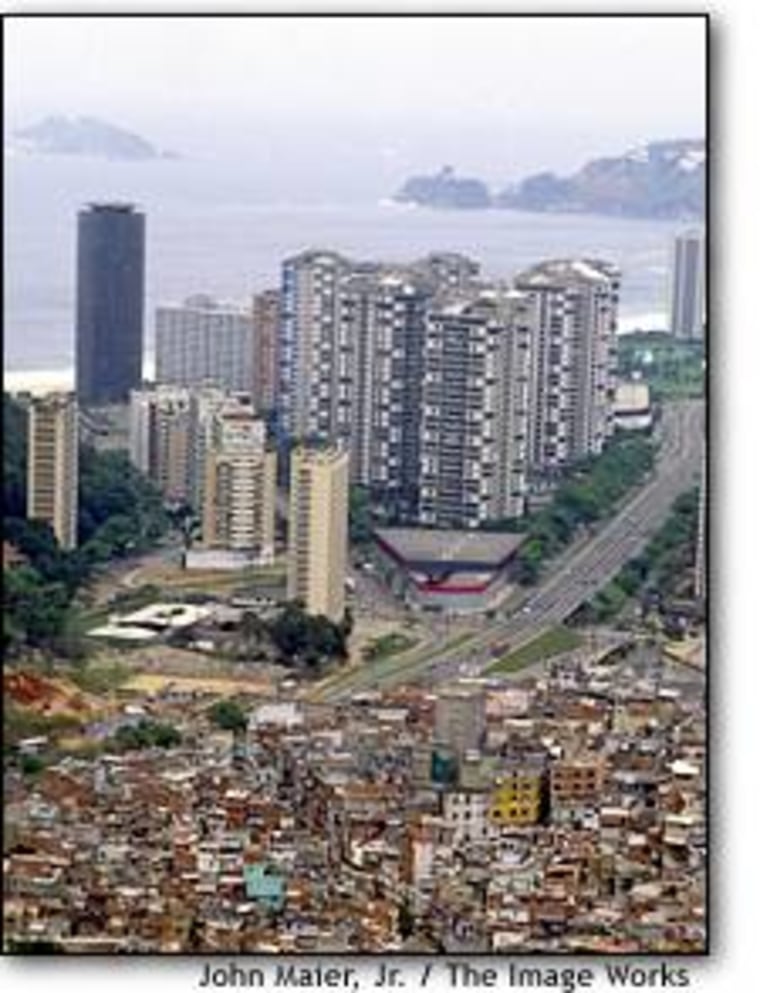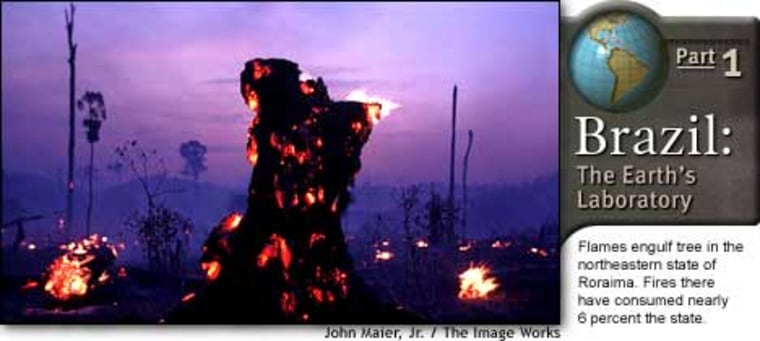Brazil may seem an odd place to find penguins, but each spring dozens ride the winter currents up from the Atlantic and come ashore in this tropical land. A government-funded program rescues the birds and places them back in the cool southbound currents when the summer ends. But this year, the rescue program and dozens of other environmental projects in Brazil received no money, thanks to country’s financial crisis. For the penguins, the heat is on.
The sky blue artificial habitats on this island that housed errant penguins last year will remain empty this year. Many of the birds that mistakenly make their way to Brazil will end up dying.
“These are animals that are coming to Brazil from other areas,” said Marcos Buhrer Campolim, the soft-spoken director of the Island’s State Park. “This is not just a problem that effects Brazil. It effects the entire planet.”
Being short of cash is nothing new for Brazil’s environmental agencies, which often have to cobble together project funding in partnerships with non-governmental organizations. But now, a series of economic crises threaten to turn what’s left of the country’s resources away from Brazil’s rapidly worsening environmental situation.
Deflated ambitions
When the effects of the Russia monetary crisis hit the Brazilian economy late last year, the government was forced to cut spending by $8 billion in an effort to balance the federal budget. Altogether, the government slashed environmental spending by 60 percent, according to figures from the private watchdog Institute for Socio-Economic Research.
Environmentalists were outraged by the decision, particularly since the government had cut matching funds for the G-7-sponsored Pilot Program for the Protection of the Tropical Forests. Without Brazil’s modest contribution, it was feared that the G7 countries would withhold the remaining money allocated this year for ten other environmental projects.
After intense lobbying, Congress agreed to restore the PPG7 matching funds, and a large portion of the overall budget. But where cuts were made across all environmental initiatives - like the 55 percent reduction in a $24 million program to promote sustainable development in the Pantanal wetlands-more was added to a program to control flooding.
“It’s incredible that the government, alleging that it has cut spending in all sectors, including social spending, would increase resources for this budget item, which in the large majority of the time is applied without being integrated into a wider public policy,” said Helcio Marcelo de Souza, director of Environmental Analysis at INESC, in an e-mail exchange.
In the end, even the Congress’ half-hearted efforts to restore environmental funding were not effective. At the end of April, the administration of President Fernando Henrique Cardoso announced that it would be using discretionary power to cut an additional 29.6% of Environmental Ministry’s budget in order to meet the country’s newest loan agreement with the International Monetary Fund.
Talk is cheap
Most environmentalists, however, say a lack of funding is only a part of the structural problems plaguing the country’s efforts to protect the environment.

They say the Brazilian government did not begin to pay attention to environmental problems until 1992, when the United Nations earth summit was held Rio de Janeiro. At the time, the Cardoso administration took a more actively conservationist public stance. He declared the Amazon and Mata Atlantica rainforests, as well as the Pantanal wetlands, part of the national patrimony and gave them protected status. National parks and conservation areas were also demarcated and limits placed on deforestation.
Behind the scenes, though, environmental groups say that Cardoso has done little to make sure that the new requlations were followed. The World Wildlife Fund last month released a study that showed that only 0.4 percent of Brazil’s territory met minimum federal standards for conservation, although 1.85 percent of the country’s land has highly-protected status.
Cardoso, environmentalists say, continues to water down the 1998 Crimes Against Nature Law, which sets penalties for deforestation and other environmental degradation.
“The first mandate of Fernando Henrique [Cardoso] was the worst administration in terms of the environment since the end of the military regime [in 1985],” said Joao Paulo Capobianco, executive director of the Instituto Socioambiental. “The government has done literally nothing to show consistency in terms of policy. Any project that is started either doesn’t have continuity or it is abandoned. The enormous growth in the deforestation of the Amazon is a clear sign of this.”
More is better, no?
Part of the reason for Cardoso’s concessions, though, may be political. The ruralist bloc in Congress, which opposes most environmental restrictions, threatened to hamstring the government’s efforts to pass the fiscal reform measures that were considered crucial for the salvation of the Brazilian economy.
Like all developing countries, Brazil has a rapidly growing population that is constantly demanding more food, water, power and sanitation. In an effort to meet the needs of its people, the country often makes quick, ill-planned decisions. Of the 40 “Great Works” that the Cardoso administration announced with its “Brazil in Action” program-hydroelectric generators, gas pipelines, power plants-the federal environmental agency Ibama objected to almost all.
Brazil’s ministries, which are generally considered to be personal fiefdoms, are often headed by politicians who are selected based on what party they represent, rather than their expertise
The damned forest
“The Balbina dam is a good example of how you should not build a hydroelectric dam,” said Garo Batmanian, head of the Worldwide Fund for Nature in Brazil. “It is in the middle of the Amazon. They flooded a large area. And we already lost a turbine because the very acidic water in the river is eating them up. Even if the environmental ministry had a budget several billion dollars, all it would do is clean up after the other agencies if they don’t coordinate before hand.”
When asked about his ministry’s efforts to combat deforestation, recently appointed Science and Technology Minister Luiz Carlos Bresser Pereira told MSNBC: “That’s not my Ministry’s responsibility. We don’t have anything to do with that.”
There are signs that newly appointed Environment Minister Jose Sarney Filho-the son of former president Jose Sarney - is trying to open a dialogue among politicians, businesspeople and environmentalists in an effort to bridge the divide between competing interests. But many Brazlians point out that until the country takes its environmental problems more seriously, the country stand little chance of making progress against the devastation.
